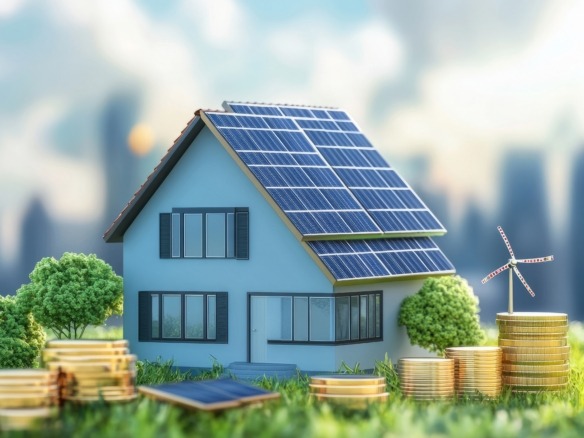Energy is an expensive resource and makes a big difference to household bills, so improving your property’s energy efficiency can help save you money along with improving your carbon footprint in terms of reduced CO2 emissions and lowering the use of natural resources.
Improving efficiency can range from free methods to those involving more expense such as installing a newer, more energy-efficient boiler.
Improving efficiency doesn’t have to be confined to the house; modern outbuilding design means if you’re supplying heat to them this can be maximized. For example, amongst the add-ons and accessories for these prefabricated metal sheds is an insulation option.
Some ways to improve energy efficiency:
Exterior paintwork
A way to either keep a home cooler so reducing the time air conditioning is running or keeping heat in is to paint the exterior in lighter or darker shades.
Darker exterior colors will tend to retain heat while lighter shades will reflect heat away more so keeping the exterior cooler; what option you choose will depend on whether your priority is heat preservation or keeping cooler.
Insulation
The two key insulation types are roof and floor:
Roof – using thick layers of fiberglass-based rolls of insulation between the roof joists in the attic prevents rising heat escaping through the roof. New homes or those built in recent years may have enough insulation but older ones may not; even if yours has some it may be worth adding a new layer.
Floor – in general, carpeted floors make for very good forms of insulation along with feeling warmer to bare or stockinged feet so preventing the tendency to feel colder and turn the heating up.
Appliances – consider the appliance’s energy efficiency in terms of its Energy Star rating when buying, and maybe consider replacing older, less efficient appliances.
Cool roofing
Designed to reflect sunlight and lower roof temperatures so keeping properties cooler through the use of reflective materials used within traditional roof construction such as tiling, shingles and paint.
Doors and windows
While replacing windows is expensive and it may take a while to ‘make back’ the energy savings, replacing a door such as the main entrance and exit may be a cost-effective move.
Modern external doors have an energy rating that can tell you how effective they are at trapping heat or cool air inside.
For windows, using curtains – especially heavier types – can both keep a house cooler in hotter weather by preventing exterior heat entering and warmer in the winter by stopping heated interior air escaping.
Another useful window treatment is to add weather strips or caulking around windows to prevent drafts.
Ventilation fans
Worth installing some as you can sometimes use them rather than air conditioning, therefore making worthwhile savings.
Using less water
Not only do you save on your water bill and do your bit to protect a valuable resource, but using less water means you won’t be heating as much of it so saving money.
Modern, ‘low flow’ plumbing fixtures such as showerheads, faucets and toilets use less water than their older counterparts. While there’s the initial cost of installing them, they should soon reward you with less water use and lower heating bills.
Lighting
Moving to low energy lighting such as LED can reduce costs and help reduce your carbon footprint; these are worthwhile savings as lighting can account for around a third of the overall electricity bill.
Replace high energy appliances
Whilst it’s a major expense, modern and more efficient boilers and air conditioners are far more efficient than their 15 to 20 year older counterparts.
Ask for expert advice
If you’d like to know exactly what you could do to improve energy efficiency for your home, your energy provider may – for free or a small fee – send someone round to inspect and assess your situation and recommend action where appropriate.



